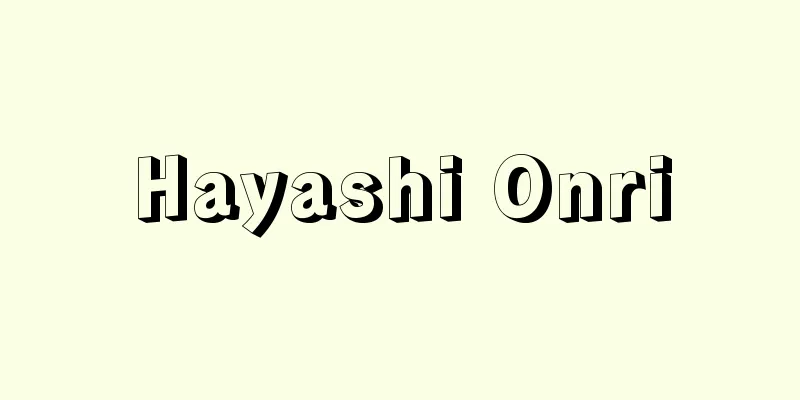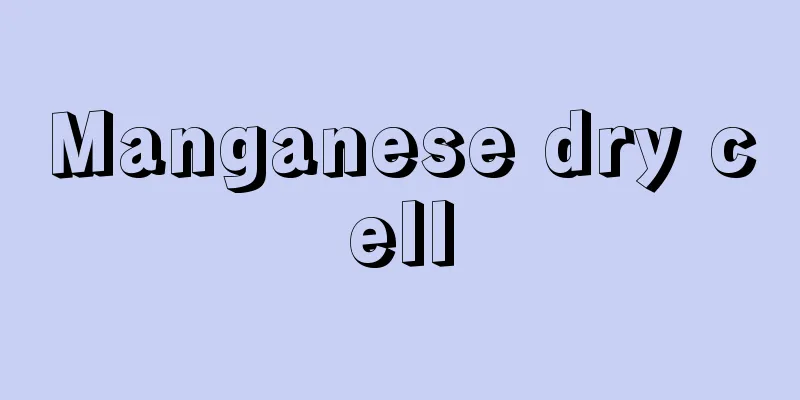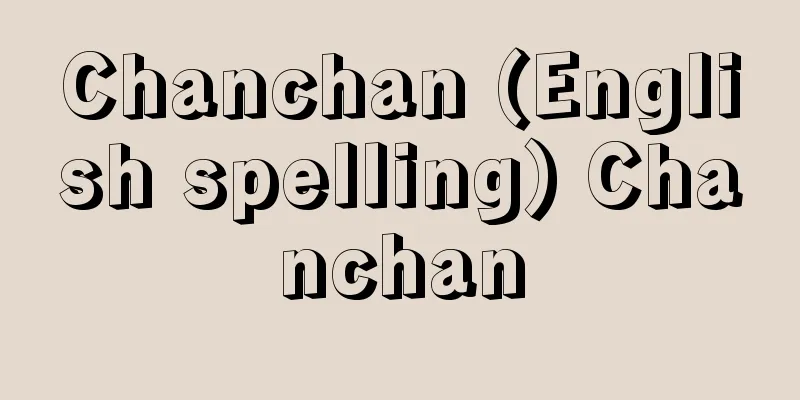Hayashi Onri

|
Year of death: January 30, 1906 (Meiji 39) Year of birth: Tempo 2.1.24 (1831.3.8) Agricultural reformer of the Meiji period. Born in Torikai Village, Sawara County, Chikuzen Province (Fukuoka City). The second son of Hayashi Naonai, a firearms instructor for the Fukuoka Domain. His childhood name was Hikotaro, later changing to Sakubei and then to Tozato. He assisted his father in firearms training. In 1870 (Meiji 3), he served in the artillery foundry department. After the abolition of the feudal domains and the establishment of prefectures, he moved to Shigetome Village in the same county and returned to farming, where he devoted himself to agricultural management. He experimented with cold water soaking (a method of soaking rice seeds in water during the winter) and soil enclosure methods (a method of storing rice seeds underground), and succeeded in increasing rice yields. He wrote about this in the "Kanno Shinsho" (published in 1881), which was well received. In the same year, in order to spread the improvement methods throughout the country, he established the private school Kannosha, and sent outstanding graduates to various places as business teachers, the number of whom reached 461 between 1883 and 1891. Wearing a Japanese-Western style outfit consisting of white-lined student caps, white shirts, vests, Western-style trousers, navy blue gloves and leg warmers, and straw sandals, they spread not only the Toori farming method, but also advanced Chikuzen farming methods such as horse-drawn plowing, regular row planting, and crab claw planting throughout the country, contributing to agricultural improvement. In 1947, he was dispatched by the Ministry of Agriculture and Commerce to Germany as an assistant to the exhibit explanation committee at the Hamburg Trade Exposition, where he inspected Western agriculture. From this time on, his farming method, based on the Yin-Yang theory, was criticized by budding agricultural scholars such as Yokoi Tokiyoshi and Sakaiwa Tsuneaki, and Kannosha gradually declined, and in 1957, he was forced to temporarily close and died in despair. From the standpoint of modern agricultural science, the Toori farming method was a technique with many flaws, but his contribution to spreading the advanced Chikuzen farming method, centered on horse-drawn plowing, throughout the country through Kannosha was great. In addition to his books, he also wrote notes on lectures such as "Notes on Hayashi's Speeches on Rice Cultivation Improvement." <References> Susuda Reikichi, "Commentary on Kanno Shinsho" (Meiji Agricultural Book Collection, Volume 1), Egami Toshio, "Rin Tonori and Kannosha" (History of the Development of Agriculture in Japan, Volume 2), Oshima Kiyoshi et al., "Portraits of Old Farmers" (Meiji Ideologues) (Taguchi Katsuichiro) Source: Asahi Japanese Historical Biography: Asahi Shimbun Publications Inc. About Asahi Japanese Historical Biography |
|
没年:明治39.1.30(1906) 生年:天保2.1.24(1831.3.8) 明治期の農事改良家。筑前国早良郡鳥飼村(福岡市)生まれ。福岡藩の銃術指南役林直内の次男。幼名彦太郎,のち策兵衛,さらに遠里と改める。父を補佐して銃術に励む。明治3(1870)年には鋳砲方出仕。廃藩置県後同郡重留村に移って帰農,農業経営に努める。寒水浸(種籾を寒中水に浸す法),土囲法(種籾を土中に蓄える法)を試み,稲の増収に成功。これを『勧農新書』(1881刊)に著し,好評を得る。同16年改良法を全国に普及させるため私塾勧農社を設立,優れた卒業生を実業教師として各地に派遣,その数は18年から26年までに461名を数えた。彼らは白線入り学生帽,白シャツ,チョッキ,洋風ももひきに紺の手甲脚絆にわらじばきという和洋折衷の姿で遠里農法のほか馬耕術,正条植え,蟹爪(雁爪)打ちなど進んだ筑前農法をも全国に伝え,農事改良に貢献した。22年農商務省からハンブルク商業博覧会出品説明委員補助としてドイツに派遣され,欧米の農業を視察した。このころから陰陽説に基づく彼の農法に対し,横井時敬,酒匂常明ら新進農学者から批判が相つぎ,勧農社はしだいに衰退,32年には一時閉鎖に追い込まれ,失意のうちに没した。近代農学の立場からは遠里農法は欠陥の多い技術であったが,勧農社を通じ馬耕術を中心とする先進的筑前農法を全国に伝えた功績は大きい。著書のほかに『林氏米作改良演説筆記』などの講演筆記がある。<参考文献>須々田黎吉「『勧農新書』解題」(『明治農書全集』1巻),江上利雄「林遠里と勧農社」(『日本農業発達史』2巻),大島清他「老農の群像」(『明治のイデオローグ』) (田口勝一郎) 出典 朝日日本歴史人物事典:(株)朝日新聞出版朝日日本歴史人物事典について 情報 |
Recommend
Suou (Caesalpinia sappan) - Suou (English spelling) Caesalpinia sappan; sappan wood
A small shrub of the legume family, native to Indi...
King James Version of the Bible
A representative English translation of the Bible...
Mandarin ducks - Mandarin ducks
〘Noun〙① A water bird of the Anatidae family. Appro...
Hanga Roa (English spelling) HangaRoa
…The population is about 2,000 (1988), of which a...
Water mass - Suikai (English spelling)
A large mass of seawater in the ocean that has si...
Carnium - Carnium
…It is located at the confluence of the Kokra and...
Gumble Cave - Gumble Cave
... The origin of weaving seems to date back to t...
Teaching Room - Teaching
...Hachiki, Tsuchigumo, etc. In addition to the f...
Manganese mineral
A mineral that contains manganese (Mn) as its main...
Mattheson - Mattheson (English spelling) Johann Mattheson
German composer, organist, music theorist, and di...
Kushida River
A river that flows east through the center of Mie...
Abu Nadara - Abu Nadara
…Egyptian playwright and journalist. Pen name Abū...
"Kibun Daijinkuruwa no Irifune" - Kibun Daijinkuruwa no Irifune
...In Kabuki, Sawamura Sojuro III played Kinokuni...
Local Education Federation - Local Education Federation
...This type of local education placed emphasis o...
projective method
…It is used in education, industry, and clinical ...









